- Home
- William Shakespeare
The Tempest Page 2
The Tempest Read online
Page 2
PLANTATION AND THE BRAVE NEW WORLD
Arrival on an island uninhabited by Europeans, talk of "plantation," an encounter with a "savage" in which alcohol is exchanged for survival skills, a process of language learning in which it is made clear who is master and who is slave, fear that the slave will impregnate the master's daughter, the desire to make the savage seek for Christian "grace" (though also a proposal that he should be shipped to England and exhibited for profit), references to the dangerous weather of the Bermudas and to a "brave new world": in all these respects, The Tempest conjures up the spirit of European colonialism. Shakespeare had contacts with members of the Virginia Company, which had been established by royal charter in 1606 and was instrumental in the foundation of the Jamestown colony in America the following year. Some time in the autumn of 1610, a letter reached England describing how a fleet sent to reinforce the colony had been broken up by a storm in the Caribbean; the ship carrying the new governor had been driven to Bermuda, where the crew and passengers had wintered. Though the letter was not published at the time, it circulated in manuscript and inspired at least two pamphlets about these events. Scholars debate the extent to which Shakespeare made direct use of these materials, but certain details of the storm and the island seem to be derived from them. There is no doubt that the seemingly miraculous survival of the governor's party and the fertile environment they discovered in the Bahamas were topics of great public interest at the time of the play.
The British Empire, the slave trade, and the riches of the spice routes lay in the future. Shakespeare's play is set in the Mediterranean, not the Caribbean. Caliban cannot strictly be described as a native of the island. And yet the play intuits the dynamic of colonial possession and dispossession with such uncanny power that in 1950 a book by Octave Mannoni called The Psychology of Colonisation could argue that the process functioned by means of a pair of reciprocal neuroses: the "Prospero complex" on the part of the colonizer and the "Caliban complex" on that of the colonized. It was in response to Mannoni that Frantz Fanon wrote Black Skin, White Masks, a book that did much to shape the intellectual terrain of the "postcolonial" era. For many Anglophone Caribbean writers of the late twentieth century, The Tempest, and the figure of Caliban in particular, became a focal point for discovery of their own literary voices. The play is less a reflection of imperial history--after all, Prospero is an exile, not a venturer--than an anticipation of it.
In terms of real political power, the British Empire at the time of the play extended no farther than Ireland. That island of colonial "plantations" and supposedly savage yet poetic natives may lie in the hinterland of Shakespeare's imagination, but the main political emphasis of the play is court intrigue rather than imperial endeavor. As in so much drama of the age, Italy--the land of courtly sophistication and cunning, of Castiglione and Machiavelli--serves as backdrop. Italy did not become a unified nation until the nineteenth century. In Shakespeare's time, it was dominated by five separate city-states: Milan, Venice, Florence, Naples, and Rome. Each was marked by rivalry with the others, internal factional division, and external pressures from Spain, France, and the Holy Roman Empire. By setting their plays amid the Italian maelstrom of the earlier sixteenth century, Shakespeare and his contemporaries could engage in theatrical debate about monarchy and republicanism, idealism and realpolitik, dynastic liaison and internecine strife, without offending the Master of the Revels who cast an austere censor's eye over every play script with a view to the suppression of any contentious matter concerning Elizabethan and Jacobean politics and religious controversy.
COURT AND MASQUE
The first recorded performance of The Tempest took place on the evening of All Saints' Day, 1 November 1611, in the presence of King James at Whitehall. Just over a year later, in February 1613, the play was one of fourteen performed by Shakespeare's company, the King's Men, as their contribution to court celebrations marking the marriage of the king's daughter Elizabeth to Prince Frederick, Count Palatine and later King of Bohemia. It has sometimes been supposed that the wedding masque staged by Prospero's spirits for Miranda and Ferdinand was an addition to the script especially for this occasion, but there is no evidence for this supposition. The Tempest is no more and no less a courtly play than any of Shakespeare's other dramas. It was not commissioned for any particular court occasion, but--like all the other plays written for the King's Men--it was created in the knowledge that it would at some time be played at court.
Given his theater company's status as the king's own players, Shakespeare remained politically guarded but made it his business to show an interest in the things that the king was interested in, such as witchcraft (Macbeth) and the question of the number of kingdoms into which Britain should be divided (King Lear). In the years when he was writing his last plays, the king and his courtiers were much preoccupied with royal marriages and the potential of dynastic liaisons to heal Europe's divisions. King James of Scotland and England was in the unique position of sitting on two Protestant thrones while being the son of a famous Roman Catholic (Mary, Queen of Scots). His wife, Anne of Denmark, had Catholic sympathies. He was therefore well qualified for his chosen role as an international peacemaker: the marriage of his son to a Catholic princess from Spain and his daughter to a Protestant prince from the Germanic territories would have been a strong strategic move. Though Shakespeare rigorously eschewed topicality and did not take the risk of seeking to advise his monarch on matters of policy, The Tempest is very much a drama of the moment: the duchy of Milan and the kingdom of Naples, together with the rivalry and intrigue of their rulers, stand as shorthand for the fractured polity of Europe, while the union of Miranda and Ferdinand embodies the hope that royal marriage might bring peace and stability. The game of chess was a powerful symbol for skillful statecraft and diplomatic maneuvering. Miranda and Ferdinand's banter over their chessboard has typically Shakespearean equipoise: does the accusation of cheating suggest the fragility of the alliance between Milan and Naples or does the good humor of the exchange suggest that Italy will be in safe hands?
As regular players in the Whitehall Palace, the King's Men knew that from the end of 1608 onward, the teenage Princess Elizabeth was resident at court. A cultured young woman who enjoyed music and dancing, she participated in court festivals and in 1610 danced in a masque called Tethys. Masques--performed by a mixed cast of royalty, courtiers, and professional actors, staged with spectacular scenery and elaborate music--were the height of fashion at court in these years. Shakespeare's friend and rival Ben Jonson, working in conjunction with the designer Inigo Jones, was carving out a role for himself as the age's leading masque-wright. In 1608 he introduced the "antimasque" (or "antemasque"), a convention whereby grotesque figures known as "antics" danced boisterously prior to the graceful and harmonious masque itself. Shakespeare nods to contemporary fashion by including a betrothal masque within the action of The Tempest, together with the antimasque farce of Caliban, Stephano, and Trinculo smelling of horse piss, stealing clothes from a line, and being chased away by dogs. One almost wonders whether the figure of Prospero is a gentle parody of Ben Jonson: his theatrical imagination is bound by the classical unities (as Jonson's was) and he stages a court masque (as Jonson did). Perhaps this is why a few years later, in his Bartholomew Fair, Jonson parodied The Tempest in return.
The masque also provides the occasion for Shakespeare to continue his meditation upon the power of "art." Sometime schoolmaster Prospero has turned himself into a theatrical impresario. Having first staged the harpy's banquet, now he educates Ferdinand and Miranda into virtue (which in their case he makes synonymous with chastity) through dramatic spectacle. The hope here is that theater can do what humanism traditionally relied on books to do. But--as is the way with live theater--things do not go quite according to plan: to Prospero's irritation, the performance is interrupted by the entrance of Caliban and company.
POETIC FAITH
The play moves toward forgiveness, but also
renunciation. The book of art is drowned. The masque and its players dissolve into vacancy:
... These our actors,
As I foretold you, were all spirits and
Are melted into air, into thin air,
And, like the baseless fabric of this vision,
The cloud-capped towers, the gorgeous palaces,
The solemn temples, the great globe itself,
Yea, all which it inherit, shall dissolve,
And, like this insubstantial pageant faded,
Leave not a rack behind. We are such stuff
As dreams are made on; and our little life
Is rounded with a sleep....
What endures is the power of the poetry. This passage, especially its last sentence, has become one of the great Shakespearean quotations: it is the kind of passage that a Renaissance reader, scanning a book for "sentences" of deep wisdom about life, would have underlined or marked in the margin.
Stylistically, the speech is typical of the fluid verse of late Shakespeare. Crudely speaking, early Shakespearean verse is characterized by a preponderance of end-stopped verse lines, frequent use of rhyme and a wide array of highly visible rhetorical figures--repetitions, variations, balanced pairs--that impart shape and symmetry to the poetry, assisting the actor in remembering his part and the spectator in perceiving the play's language as memorable. Late Shakespearean verse, by contrast, is more flexible. There is a preponderance of run-on or enjambed lines, thoughts that spill over the line-ending and set up a tension between the movement of the meter and that of the grammar. The meter itself is also more varied: although the five beats of the iambic pentameter remain the underlying pulse or heartbeat, the rhythm measured to match the breath and pitch of English speech, irregularities are frequent. Subject and verb may be split across the line-ending. Half lines, incomplete lines, feminine endings (an extra offbeat syllable), bold variations in the position of the caesura or midline pause, elaborations of simile and metaphor that snake across a whole speech: such arts serve to create the illusion of a character thinking in the moment and turning the thought to words, as opposed to an actor reciting a rhetorically finished prepared speech.
Thus: "These our actors" (sentence beginning in the middle of a verse line), pause, "As I foretold you" (parenthetic reference back to earlier dialogue), pause, "were all spirits and" (verse line ends with a forward-thrusting "and" instead of the customary pausal punctuation mark) "Are melted into air," pause for elaboration, "into thin air," take breath before launching into elaborated simile, then the towers, the palaces, the temples, the globe (each with its adjective and for the globe a special gesture or intonation in recognition that the theater-home of "these our actors" was "the great globe itself"), pause again, to gather and strengthen the strands of the thought with "Yea," then through an asymmetrical parallelism of short and long, little function words and large-meaning verbs ("all which it" played off against "shall" and "inherit" against "dissolve"), then a repetition of the structure established four lines before ("And, like"), but with an upping of the ante ("baseless fabric" inflated to "insubstantial pageant"), and finally fade after "faded" to the completion of the sentence in the half line "Leave not a rack behind," the key word being "rack," which primarily means a wisp of cloud, thus clinching the sustained comparison of actors, theater, and life itself to weather--English weather, evanescent, always changeable--but also, by means of the play on "wreck" (which in Shakespearean English was pronounced and sometimes spelled "wrack"), evoking the particular form of extreme weather, namely tempest, that Prospero has conjured up at the beginning of the play. The subtlety of the verse movement matches the complexity of the thought. Through the vocal art of a skilled actor, the "beating mind" and the beats of the verse are as one.
Prospero's renunciations suggest that the play itself is profoundly skeptical of the power of the book and even of the theater. The closing sections of the dialogue focus on traditional religious themes such as the search for grace and the preparation of the soul for death. Prospero's Christian language reaches its most sustained pitch in the epilogue, but his final request is for the indulgence not of God but of the audience. At the last moment, humanist learning is replaced not by Christian but by theatrical faith. Because of this it has been possible for the play to be read, as it so often has been since the Romantic period, as a credo, an apologia pro vita sua (a justification of his own life), on the part of Shakespeare the dramatist. The drama's own afterlife folds back its interior movement from secular to sacred: The Tempest has become a work of secular scripture. When art took over some of the functions of religion in the nineteenth and twentieth centuries, as Matthew Arnold predicted it would, Shakespeare became a kind of God, and the role The Tempest performed became analogous to that which classical texts such as Virgil's Aeneid performed for humanism. Humanism became the humanities and Shakespeare became the classic text at the center of the literary curriculum, where he still remains. This edition feeds that process, but with its particular emphasis on the play in performance--explored in the essays on Shakespeare's career in the theater and on the play's stage history, and above all through the inclusion of the voices of distinguished directors--it also seeks to return The Tempest to the theater.
ABOUT THE TEXT
Shakespeare endures through history. He illuminates later times as well as his own. He helps us to understand the human condition. But he cannot do this without a good text of the plays. Without editions there would be no Shakespeare. That is why every twenty years or so throughout the last three centuries there has been a major new edition of his complete works. One aspect of editing is the process of keeping the texts up to date--modernizing the spelling, punctuation, and typography (though not, of course, the actual words), providing explanatory notes in the light of changing educational practices (a generation ago, most of Shakespeare's classical and biblical allusions could be assumed to be generally understood, but now they can't).
But because Shakespeare did not personally oversee the publication of his plays, with some plays there are major editorial difficulties. Decisions have to be made as to the relative authority of the early printed editions, the pocket format "Quartos" published in Shakespeare's lifetime and the elaborately produced "First Folio" text of 1623, the original "Complete Works" prepared for the press after his death by Shakespeare's fellow actors, the people who knew the plays better than anyone else. The Tempest, however, exists only in a Folio text that is extremely well printed. Save for a handful of possible misprints, the Folio is highly trustworthy and unusually easy to edit.
The following notes highlight various aspects of the editorial process and indicate conventions used in the text of this edition:
Lists of Parts are supplied in the First Folio for only six plays, of which The Tempest is one. Capitals indicate that part of the name which is used for speech headings in the script (thus "PROSPERO, the right Duke of Milan").
Locations are provided by the Folio for only two plays, of which The Tempest, set on "an uninhabited Island," is one. Eighteenth-century editors, working in an age of elaborately realistic stage sets, were the first to provide detailed locations ("another part of the island"). Given that Shakespeare wrote for a bare stage and often an imprecise sense of place, we have relegated locations to the explanatory notes, where they are given at the beginning of each scene where the imaginary location is different from the one before. We have emphasized broad geographical settings rather than specifics of the kind that suggest anachronistically realistic staging.
Act and Scene Divisions were provided in the Folio in a much more thoroughgoing way than in the Quartos. Sometimes, however, they were erroneous or omitted; corrections and additions supplied by editorial tradition are indicated by square brackets. Five-act division is based on a classical model, and act breaks provided the opportunity to replace the candles in the indoor Blackfriars playhouse which the King's Men used after 1608, but Shakespeare did not necessarily think in terms of a five-part struct
ure of dramatic composition. The Folio convention is that a scene ends when the stage is empty. Nowadays, partly under the influence of film, we tend to consider a scene to be a dramatic unit that ends with either a change of imaginary location or a significant passage of time within the narrative. Shakespeare's fluidity of composition accords well with this convention, so in addition to act and scene numbers we provide a running scene count in the right margin at the beginning of each new scene, in the typeface used for editorial directions. Where there is a scene break caused by a momentary bare stage, but the location does not change and extra time does not pass, we use the convention running scene continues. There is inevitably a degree of editorial judgment in making such calls, but the system is very valuable in suggesting the pace of the plays.
Speakers' Names are often inconsistent in Folio. We have regularized speech headings, but retained an element of deliberate inconsistency in entry directions, in order to give the flavor of Folio.
Verse is indicated by lines that do not run to the right margin and by capitalization of each line. The Folio printers sometimes set verse as prose, and vice versa (either out of misunderstanding or for reasons of space). We have silently corrected in such cases, although in some instances there is ambiguity, in which case we have leaned toward the preservation of Folio layout. Folio sometimes uses contraction ("turnd" rather than "turned") to indicate whether or not the final "-ed" of a past participle is sounded, an area where there is variation for the sake of the five-beat iambic pentameter rhythm. We use the convention of a grave accent to indicate sounding (thus "turned" would be two syllables) but would urge actors not to overstress. In cases where one speaker ends with a verse half line and the next begins with the other half of the pentameter, editors since the late eighteenth century have indented the second line. We have abandoned this convention, since the Folio does not use it, and nor did actors' cues in the Shakespearean theater. An exception is made when the second speaker actively interrupts or completes the first speaker's sentence.

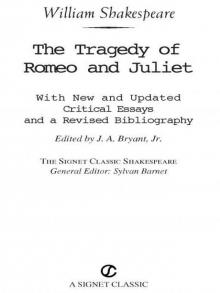 Romeo and Juliet
Romeo and Juliet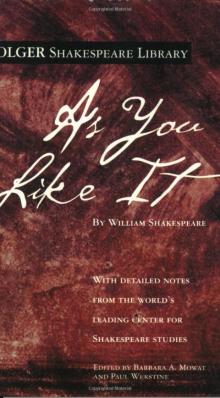 As You Like It (Folger Shakespeare Library)
As You Like It (Folger Shakespeare Library)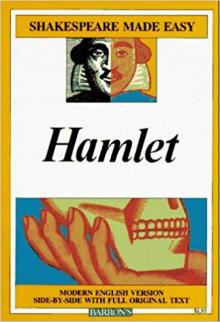 Hamlet
Hamlet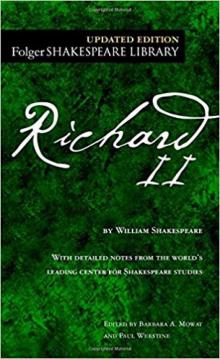 Richard II (Folger Shakespeare Library)
Richard II (Folger Shakespeare Library) Macbeth
Macbeth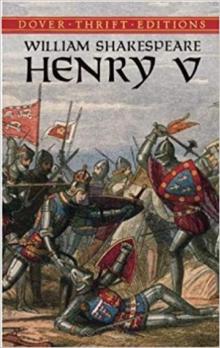 Henry V
Henry V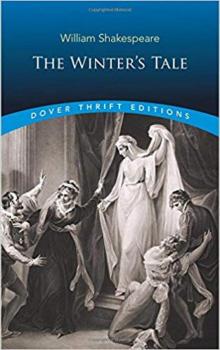 The Winter's Tale
The Winter's Tale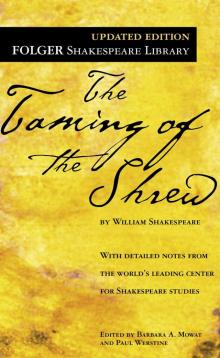 The Taming of the Shrew
The Taming of the Shrew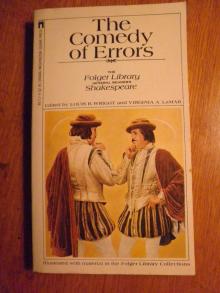 The Comedy of Errors
The Comedy of Errors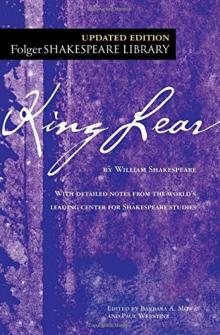 King Lear (Folger Shakespeare Library)
King Lear (Folger Shakespeare Library)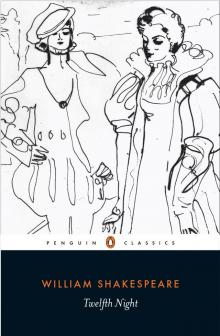 Twelfth Night
Twelfth Night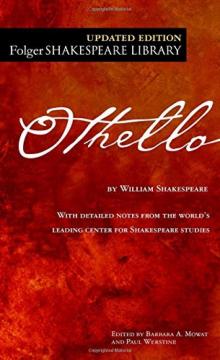 Othello
Othello The Two Gentlemen of Verona
The Two Gentlemen of Verona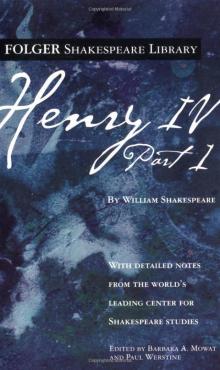 Henry IV, Part 1 (Folger Shakespeare Library)
Henry IV, Part 1 (Folger Shakespeare Library)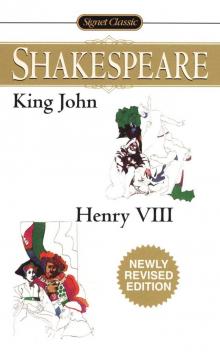 King John/Henry VIII (Signet Classics)
King John/Henry VIII (Signet Classics)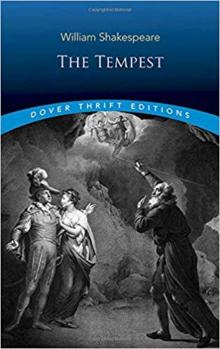 The Tempest
The Tempest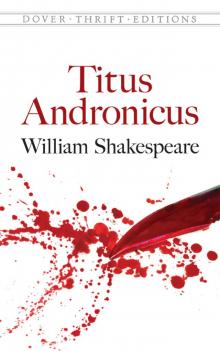 Titus Andronicus (Dover Publications)
Titus Andronicus (Dover Publications)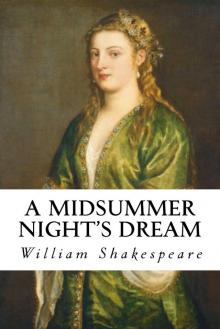 A Midsummer Night's Dream
A Midsummer Night's Dream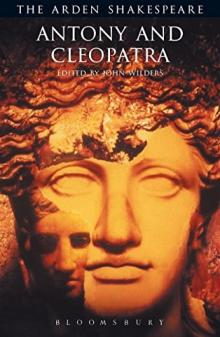 Antony and Cleopatra (Arden Shakespeare: Third Series)
Antony and Cleopatra (Arden Shakespeare: Third Series)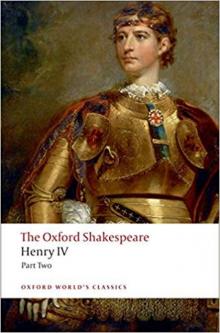 The Oxford Shakespeare: Henry IV, Part 2 (Oxford World's Classics)
The Oxford Shakespeare: Henry IV, Part 2 (Oxford World's Classics)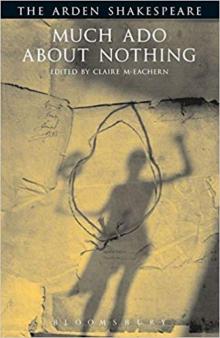 Much Ado About Nothing (Arden Shakespeare: Third Series)
Much Ado About Nothing (Arden Shakespeare: Third Series)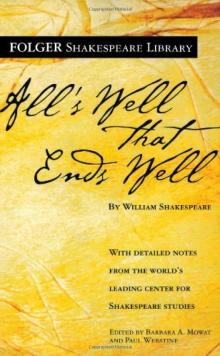 All's Well That Ends Well
All's Well That Ends Well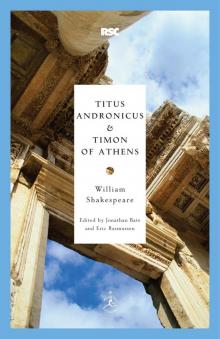 Titus Andronicus & Timon of Athens
Titus Andronicus & Timon of Athens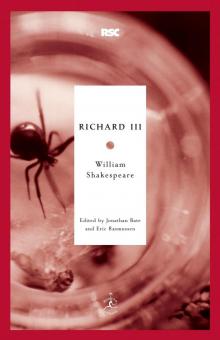 Richard III (Modern Library Classics)
Richard III (Modern Library Classics)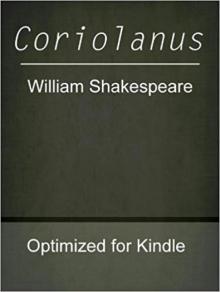 Coriolanus
Coriolanus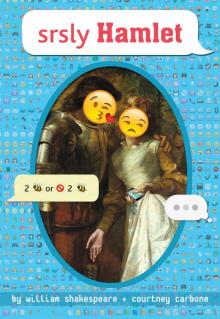 srsly Hamlet (OMG Shakespeare)
srsly Hamlet (OMG Shakespeare)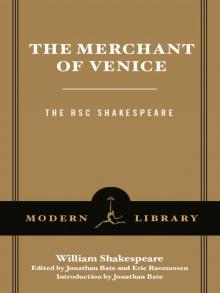 The Merchant of Venice
The Merchant of Venice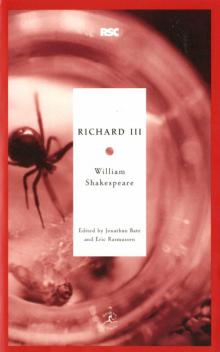 Richard III
Richard III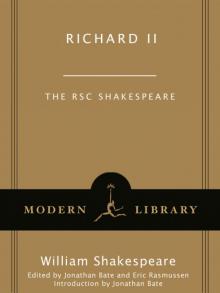 Richard II
Richard II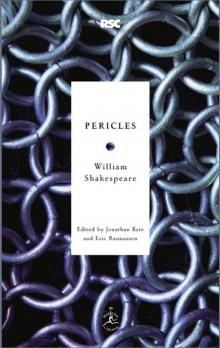 Pericles
Pericles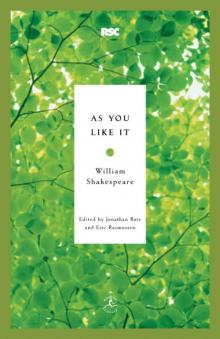 As You Like It
As You Like It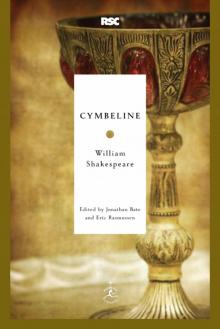 Cymbeline
Cymbeline Alls Wel that ends Well
Alls Wel that ends Well YOLO Juliet
YOLO Juliet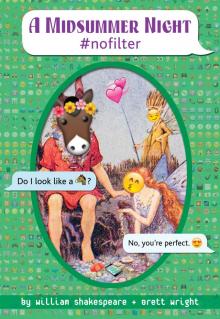 A Midsummer Night #nofilter
A Midsummer Night #nofilter Love's Labour's Lost
Love's Labour's Lost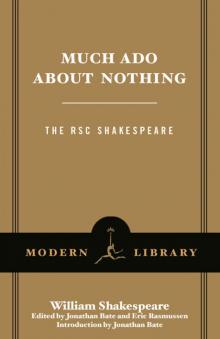 Much Ado About Nothing
Much Ado About Nothing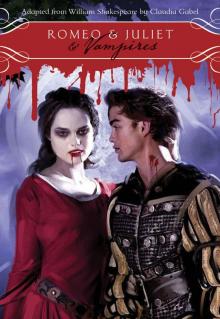 Romeo & Juliet & Vampires
Romeo & Juliet & Vampires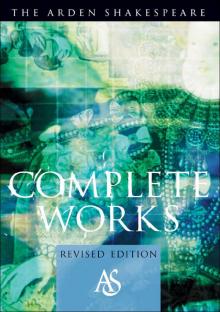 The Arden Shakespeare Complete Works
The Arden Shakespeare Complete Works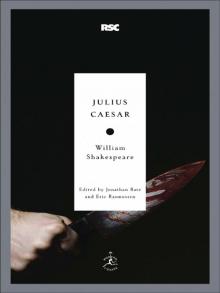 Julius Caesar
Julius Caesar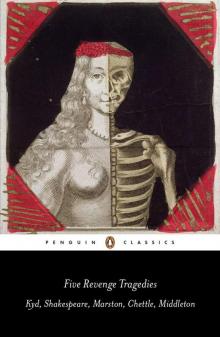 Five Revenge Tragedies: The Spanish Tragedy, Hamlet, Antonio's Revenge, The Tragedy of Hoffman, The Revenger's Tragedy (Penguin Classics)
Five Revenge Tragedies: The Spanish Tragedy, Hamlet, Antonio's Revenge, The Tragedy of Hoffman, The Revenger's Tragedy (Penguin Classics)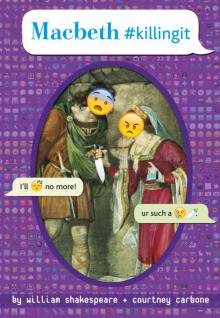 Macbeth #killingit
Macbeth #killingit The Oxford Shakespeare: The Complete Works
The Oxford Shakespeare: The Complete Works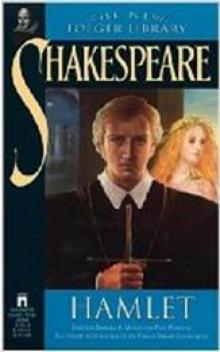 Hamlet, Prince of Denmark (Collins edition)
Hamlet, Prince of Denmark (Collins edition)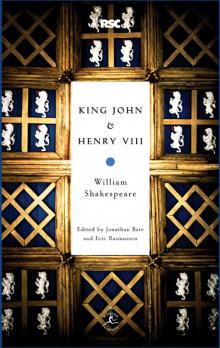 King John & Henry VIII
King John & Henry VIII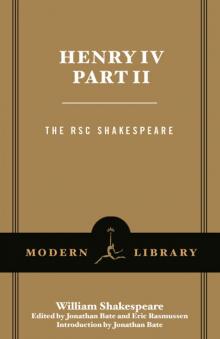 Henry IV, Part 2
Henry IV, Part 2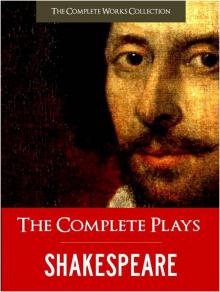 Complete Plays, The
Complete Plays, The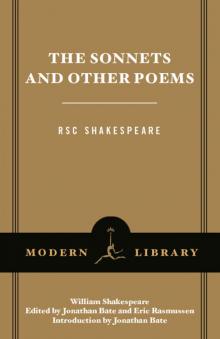 The Sonnets and Other Poems
The Sonnets and Other Poems Antony and Cleopatra
Antony and Cleopatra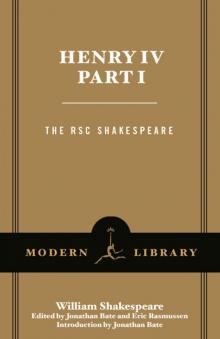 Henry IV, Part 1
Henry IV, Part 1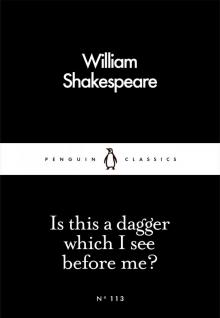 Is This a Dagger Which I See Before Me?
Is This a Dagger Which I See Before Me?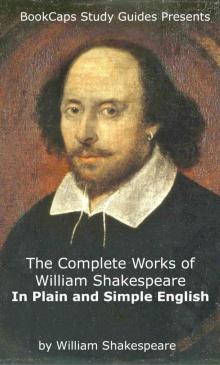 The Complete Works of William Shakespeare In Plain and Simple English (Translated)
The Complete Works of William Shakespeare In Plain and Simple English (Translated)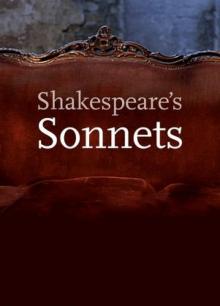 The Sonnets
The Sonnets